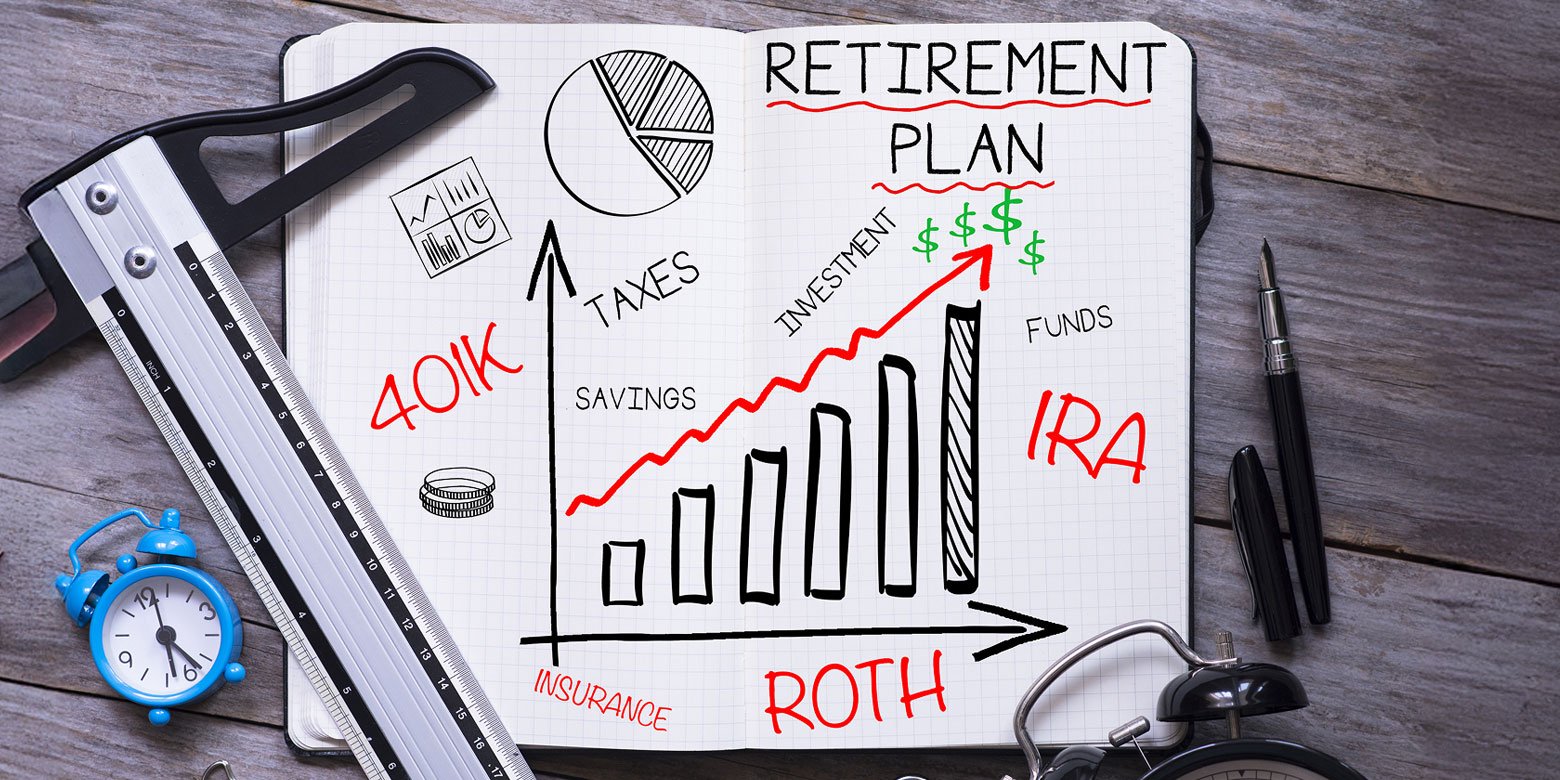You must start withdrawing from tax-deferred retirement accounts at a certain age, but there are a few important things to consider.
The biggest immediate perk of saving money in a tax-deferred retirement account like a 401(k) or IRA is that you don’t have to pay tax on the income you contribute. But that doesn’t mean the IRS gives you a completely free ride with your retirement savings—they want to collect tax eventually. And that’s where required minimum distributions, or RMDs, come in.
As of 2023, owners of tax-deferred retirement accounts are required to start taking distributions once they turn 73 years old if born before 1959 (or at age 75 if born in 1960 or after). Thus, for individuals who turn 72 in 2023, RMDs will be pushed back by one year compared to the prior rules and will begin at age 73. RMDs will continue to be required at age 73 through 2032. Then, beginning in 2033, RMDs will be pushed back further, to age 75.
What hasn’t changed? There’s no getting around it, because if you don’t, you’ll pay a penalty of 25% of the shortfall.1 However, there are four aspects you can control when it comes to RMDs, so here’s what you need to keep in mind.
1. You can choose when to take your RMDs
RMDs need to be taken by Dec. 31 of each calendar year, with one exception which we’ll get to in a second. In other words, you have a 12-month window to fulfill your RMD obligation for the year.
Why would choosing when to take your RMD matter? Say, for instance, you don’t like the market conditions at the beginning of the year, you can wait to see if they improve and take your RMDs later in the year. For example, this could be a reasonable strategy with stocks being beaten down heading into 2023. You may prefer to hold on to shares and hope they regain some of their value before you need to sell them to take your RMDs. This strategy makes sense, especially if you don’t need the money to cover living expenses.
You can also choose to spread out your distributions rather than take a lump sum. So, if you are unsure if the market will go up or down this year, instead of trying to time the best withdrawal period, you could spread your RMDs over the year. Or, if you need regular income or better control over your spending budget, a series of distributions may make more sense. For example, if your RMD for 2023 is $20,000, you can choose to take $5,000 every three months. Or you could plan your RMDs around major expenses, like vacations.
What if you have an inherited IRA? Timing is also important. Even if you planned to follow the 10-year rule of when you must take a distribution, you may want to speed up the timing of distributions and take them this year to capitalize on the down market as opposed to waiting and potentially paying more tax during a stronger market.
The IRS doesn’t care if you decide to take your RMD in a lump sum or as a series of payments throughout the year. So as long as you withdraw the required minimum by Dec. 31, you can take as many (or as few) individual withdrawals as you want.
The timing exception is when it comes to your first RMD, where you have even more flexibility. Beginning in 2023, your first distribution must be taken by April 1 of the year after you turn 73.2 For example, if you turn 73 in February 2023, your first RMD doesn’t need to be taken until April 1, 2024, when you’ll already be 74 years old.
A word of caution—if you choose to wait until the next calendar year to take your first RMD, you’ll have to take another before the end of the same year—that’s double the distribution amount in one year. This could have major tax implications since (in most cases) RMDs from tax-deferred accounts are treated as taxable income. This strategy typically only makes sense if you have a high-income year—like from the sale of a business or a lump-sum payment—in the year you turn age 73.
Of course, these decisions involve your individual tax situation, so always consult with your tax professional.
2. You can convert to a Roth instead
Here’s an interesting strategy for retirees who don’t want to get stuck taking RMDs every year–a Roth conversion, often called a backdoor Roth. Fortunately, the Consolidated Appropriations Act of 2023 (dubbed the SECURE Act 2.0), which was signed into law on Dec. 23, 2022, does not restrict or eliminate the ability to do a backdoor Roth conversion as many had feared it might.
This strategy is particularly valuable in today’s market environment. Retirement accounts are probably lower after the 2022 market decline when stocks fell over 19%. Converting when prices are depressed means you may be able to convert a larger percentage of your account. What do we mean? Say you plan to convert a $500k IRA in full over 5 years at the rate of $100K each year. If the market declines 20% and the account balance is now $400K, that $100K that you convert now represents 25% of your account, whereas if the market was up and the account was still $500K, you would have only converted 20%. Said another way, for the same tax bill on the same $100K, you get to convert an additional 5% of the account balance.
Another possible benefit? Because you’re not selling any securities, you don’t have to worry that you’re locking in depressed values. A win-win! Like the decision on when to take RMDs, a Roth conversion could also be affected by timing. But unlike waiting for the market to recover before taking RMDs, converting when the market is lower is better.
To be perfectly clear, you cannot use a Roth conversion to satisfy your RMD requirement all by itself. For example, if your RMD is $20,000 and you convert $20,000 of your traditional IRA to a Roth, you still have to withdraw $20,000 from your traditional IRA.
However, you can use your RMD to cover the taxes on a Roth conversion. Continuing our example of a $20,000 RMD, if you don’t need the money, you can choose to convert a larger portion of your account to a Roth and use the $20,000 you’re required to withdraw to cover the taxes.
Roth conversions aren’t for everyone and can have potential drawbacks. For example, a Roth might not be the best way to transfer wealth if your heirs are in a lower income tax bracket. But Roth IRAs don’t have any RMD requirements whatsoever, so by using your RMDs to help facilitate Roth conversions, it can be a good way to avoid unwanted withdrawals (and paying taxes on income you don’t need) in the future.
3. You can choose what you do with the money
You also have the flexibility to choose what to spend the money on. While this may seem like a completely obvious benefit of RMDs, there is an interesting possibility for charitably minded individuals.
Instead of donating cash to a charity, consider using your RMDs instead. A qualified charitable distribution, or QCD, is a direct transfer from your IRA to a qualified charity. A QCD counts towards your RMD for the year, and there’s an annual maximum of $100,000 per person. If you make a QCD, the money is not treated as taxable income (like most tax-deferred retirement withdrawals), so you don’t have to pay any tax on the distribution. And by making a QCD, you can still take the standard deduction on your taxes, so it’s like getting a double deduction! Another aspect to consider: QCDs can start at age 70½, so you have 4½ years to do QCDs before RMDs start. As a housekeeping note, QCDs aren’t available from 401(k)s or other defined contribution plans, but you certainly can roll over your 401(k) to an IRA and then make a QCD. Also, they cannot go into donor-advised funds or private foundations.
4. You can choose to go back to work
We get it—most people are not inclined to return to the workforce in their 70s. But one way to get around the RMD rules is to go back to work to take advantage of the still-working exception. To take advantage of this exception, you must enroll in your employer-sponsored retirement plan and roll your current IRAs and old 401(k)s into your new employer's qualified retirement plan.
Whatever you choose, don’t forget your RMDs
As we mentioned, the newly enacted Secure Act 2.0 made some big changes to RMDs. Most notably, the age at which RMDs begin has been increased by one year to age 73 beginning in 2023. Plus, the penalty for not taking RMDs is reduced from 50% to 25%. And the penalty can be as low as 10% in cases of IRAs where the RMD deficiency is quickly fixed.
However, this is still a stiff penalty for non-compliance. For context, if you forget to take a $20,000 RMD from your 401(k), you’re looking at a $5,000 penalty. So, let’s be perfectly clear—you have to take your RMDs–that’s out of your control. But when you take it, if you need to take it at all in the future, or what you do with it is 100% in your control.

Like what you're reading?
Join the thousands of readers getting stories like this delivered straight to their inbox every Thursday — for free. Give it a spin, enter your email to sign up.
Footnotes
1The Consolidated Appropriations Act of 2023 passed on Dec. 23, 2022 increases the age for RMDs and reduces the penalty from 50% to 25% of the shortfall with a possibility of only a 10% penalty if the mistake is corrected in a timely manner.
2Fidelity.com, SECURE 2.0: Rethinking Retirement Savings, Dec. 23, 2022
Related Articles

Making Sense of Required Minimum Distributions
The government wants you to save for retirement. That’s why many people believe retirement savings...

Roth Conversions and RMDs
Required minimum distributions (RMDs) are a reality of tax advantaged accounts. Once you pass the...
.jpg)
Reduce your Tax Burden with Qualified Charitable Distributions
What can you do with your required minimum distribution (RMD) if you don’t need (all of) it? That...
